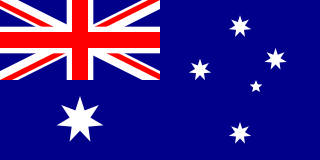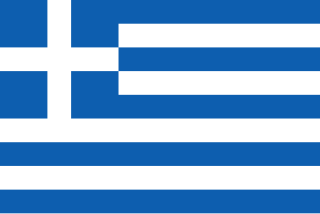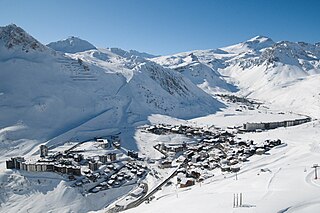
Michael John Milton, OAM is an Australian Paralympic skier, Paralympic cyclist and paratriathlete with one leg. With 6 gold, 3 silver and 2 bronze medals he is the most successful Australian Paralympic athlete in the Winter Games.
Alpine skiing at the 2002 Winter Paralympics consisted of 53 events, 34 for men and 19 for women which all took place at the Snowbasin Ski Area.

The United Kingdom of Great Britain and Northern Ireland competed at the 1992 Winter Paralympics held in Tignes and Albertville, France. The team was known by it shortened name of Great Britain, for identification purposes.

The 1984 Winter Paralympics, then known as The Third World Winter Games for the Disabled, were held in Innsbruck, Austria. The games took place from the 15 until 21 January. Present at these games were 419 athletes from 21 countries, Spain and the Netherlands competing for the first time in the Winter Paralympics, competing in 107 events across 3 sports. The inclusion of Les Austres and Cerebral palsy impairment groups contributing to the distinct increase in athlete participation with the total number of athletes jumping from 229 at Geilo, Norway in 1980.
Matthew Stockford is a British former Paralympic skier who won medals at the 1992 Winter Paralympics and 1994 Winter Paralympics. Stockford broke his back in a skiing accident in 1985. He competed using a monoski – a specially fitted chair over a single ski that includes seat belts and other strapping, as well as a suspension device to minimise wear and tear on the skier's body.

The 1998 Winter Paralympics were held in Nagano, Japan from the 5–14 March 1998. At the Games, Australia was represented by four male alpine skiers. Australia finished equal 16th of 21 Nations on the overall medal tally. James Patterson, an LW9 standing skier, won Australia's two medals - one gold and one bronze.

Following the success of the first ever 1976 Winter Paralympics in Örnsköldsvik four years earlier, Norway was selected to host the Paralympic Games in 1980.

The 1988 Paralympic Winter Games were the fourth Winter Paralympics, held at the venue of the preceding Games, in Innsbruck, Austria. These were the last Winter Paralympics to be held in a separate location from the Summer Paralympic Games. Beginning in 1992, the Olympics and the Paralympics were held in the same city or in an adjacent city in the same country. These Winter Paralympics were not held at the 1988 Olympic venue in Calgary, Alberta, Canada, due to the lack of manpower and financial difficulties.

Australia competed at the 1992 Winter Paralympics in Tignes and Albertville in France. They were the first winter Paralympics to be celebrated concurrently with the Olympic Games. The official logo of the Games was designed by Jean-Michel Folon.It depicts a bird with broken wings, soaring high across the peak of a mountain. This was used to reflect the sporting abilities of the athletes at the Games. The official mascot, Alpy, designed by Vincent Thiebaut, represented the summit of the Grande Motte mountain in Tignes. Alpy was shown on a mono-ski to demonstrate its athleticism and the colours of white, green and blue were used to represent purity/snow, hope/nature and discipline/the lake. The 1992 Games were where Australia won their first winter medals at the Paralympics. Michael Milton won Australia's first gold with a win in the Men's Slalom LW2. Milton also won a silver medal in the Men's Super G LW2. At these Games, Australia was represented by 5 male athletes. Australia was placed 12th in the overall medal tally for the Winter Games winning a total of 4 medals: 1 gold, 1 silver and 2 bronze.

The 1994 Winter Paralympics were held in Lillehammer, Norway. Australia sent six male skiers, who won three gold, two silver and four bronze medals. Australia, at the time, achieved their best ever performance at a Winter Paralympics, finishing 5th overall in the alpine skiing competition, 9th in the medal standings, and 11th in the total medal count out of 31 nations.
LW12 is a para-Alpine and para-Nordic sit skiing sport class defined by the International Paralympic Committee (IPC). An LW12 skier needs to meet a minimum of one of several conditions including a single below knee but above ankle amputation, monoplegia that exhibits similar to below knee amputation, legs of different length where there is at least a 7 centimetres difference, combined muscle strength in the lower extremities less than 71. For international competitions, classification is done through IPC Alpine Skiing or IPC Nordic Skiing. For sub-international competitions, classification is done by a national federation such as Alpine Canada. For para-Alpine, this class is subdivided into two subclasses.: LW12.1 and LW12.2. A new sit-skier competitor with only national classification will compete as LW12.2 in international competitions until they have been internationally classified.
LW5/7 is a standing para-Alpine and para-Nordic skiing classification for skiers with upper extremity issues in both limbs that may include double amputation of both arms and hands or dysmelia of the upper limbs. The class has three subclasses defined by the location of the disability on the upper extremities. International classification is done by IPC Alpine Skiing and IPC Nordic Skiing. On the national level, classification is handled by national sports federation such as Cross-Country Canada.
Karolina Wisniewska is a para-alpine standing skier. Born in Warsaw, she moved to Canada when she was 5 years old where she then took up skiing as a form of physical therapy for her cerebral palsy. Over the course of her skiing career, she won eight total Paralympic medals for skiing, and 18 medals at International Paralympic Committee (IPC) World Cups. At the 2002 Winter Paralympics, she earned four medals, the most ever earned by a Canadian para-alpine skier at a single Games. Wisniewska retired from the sport for a second time in May 2012 following an injury in 2011 that resulted in her missing most of the 2011/2012 skiing season.

Chile sent a delegation to compete at the 2014 Winter Paralympics in Sochi, Russia from 7–16 March 2014. This was Chile's fourth participation in a Winter Paralympic Games. The Chilean delegation consisted of two alpine skiers, Jorge Migueles and Santiago Vega. Migueles finished 25th in the men's standing slalom and 20th in the men's standing giant slalom, while Vega finished 32nd in the regular slalom.

Armenia sent a delegation to compete at the 2014 Winter Paralympics in Sochi, Russia from 7–16 March 2014. This was the nation's fifth appearance at a Winter Paralympic Games. The delegation consisted of a single alpine skier, Mher Avanesyan, who lost both arms as a child after coming into contact with a high-voltage electrical wire. In the men's standing slalom he came in 34th place out of 35 competitors who finished the race, and he failed to finish the giant slalom.

Denmark sent a delegation to compete at the 2014 Winter Paralympics in Sochi, Russia from 7–16 March 2014. This was Denmark's tenth appearance at a Winter Paralympic Games. The Danish delegation to Sochi consisted of two alpine skiers, Ulrik Nyvold and Line Damgaard. Nyvold failed to finish either of his events, while Damgaard placed 12th in the women's standing slalom and 15th in the women's standing giant slalom.

Greece sent a delegation to compete at the 2014 Winter Paralympics in Sochi, Russia from 7–16 March 2014. This was Greece's third appearance at a Winter Paralympic Games. Their only athlete was alpine skier Efthymios Kalaras. He suffered a spinal cord injury two decades before these Paralympics, and was a returning Paralympic silver medalist from the 2004 Summer Paralympics in the discus throw. He finished 22nd in the sitting giant slalom, nearly a minute behind the gold medal time.

Iceland sent a delegation to compete at the 2014 Winter Paralympics in Sochi, Russia from 7–16 March 2014. This was Iceland's third time participating at a Winter Paralympic Games. The Icelandic delegation consisted of two alpine skiers, Erna Friðriksdóttir and Jóhann Þór Hólmgrímsson. Jóhann finished 23rd in the men's sitting giant slalom, while Erna finished 10th in the women's sitting slalom and 9th in the women's sitting giant slalom.

New Zealand sent a delegation to compete at the 2014 Winter Paralympics in Sochi, Russia, held between 7–16 March 2014. The country continued its streak of competing in every Winter Paralympics since 1984. New Zealand's delegation consisted of three competitors in alpine skiing, one of whom, Corey Peters, won a silver medal in the giant slalom. With one silver medal, the country tied for 16th on the medal table for these Paralympics.

Poland competed at the 1984 Winter Paralympics in Innsbruck, Austria. 16 competitors from Poland won 13 medals and finished 9th in the medal table.













